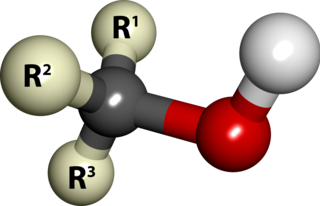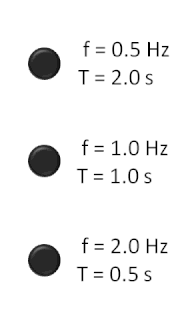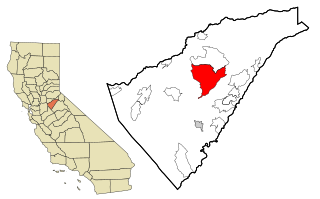
In chemistry, an alcohol is any organic compound in which the hydroxyl functional group (–OH) is bound to a carbon. The term alcohol originally referred to the primary alcohol ethanol, which is used as a drug and is the main alcohol present in alcoholic beverages. An important class of alcohols, of which methanol and ethanol are the simplest members, includes all compounds for which the general formula is CnH2n+1OH. It is these simple monoalcohols that are the subject of this article.

The brown bear is a bear that is found across much of northern Eurasia and North America. In North America the population of brown bears are often called grizzly bears. It is one of the largest living terrestrial members of the order Carnivora, rivaled in size only by its closest relative, the polar bear, which is much less variable in size and slightly larger on average.

A constellation is a group of stars that forms an imaginary outline or pattern on the celestial sphere, typically representing an animal, mythological person or creature, a god, or an inanimate object.

The hertz (symbol: Hz) is the derived unit of frequency in the International System of Units (SI) and is defined as one cycle per second. It is named for Heinrich Rudolf Hertz, the first person to provide conclusive proof of the existence of electromagnetic waves. Hertz are commonly expressed in multiples: kilohertz (103 Hz, kHz), megahertz (106 Hz, MHz), gigahertz (109 Hz, GHz), terahertz (1012 Hz, THz), petahertz (1015 Hz, PHz), and exahertz (1018 Hz, EHz).
ISO 3166 is a standard published by the International Organization for Standardization (ISO) that defines codes for the names of countries, dependent territories, special areas of geographical interest, and their principal subdivisions. The official name of the standard is Codes for the representation of names of countries and their subdivisions.
The joule is a derived unit of energy in the International System of Units. It is equal to the energy transferred to an object when a force of one newton acts on that object in the direction of its motion through a distance of one metre. It is also the energy dissipated as heat when an electric current of one ampere passes through a resistance of one ohm for one second. It is named after the English physicist James Prescott Joule (1818–1889).

K2, also known as Mount Godwin-Austen or Chhogori, at 8,611 metres (28,251 ft) above sea level, is the second highest mountain in the world, after Mount Everest at 8,848 metres (29,029 ft). It is located on the China–Pakistan border between Baltistan in the Gilgit-Baltistan region of northern Pakistan, and the Taxkorgan Tajik Autonomous County of Xinjiang, China. K2 is the highest point of the Karakoram range and the highest point in both Pakistan and Xinjiang.
Python is an interpreted, high-level, general-purpose programming language. Created by Guido van Rossum and first released in 1991, Python has a design philosophy that emphasizes code readability, notably using significant whitespace. It provides constructs that enable clear programming on both small and large scales. Van Rossum led the language community until stepping down as leader in July 2018.
The name of God most often used in the Hebrew Bible is the Tetragrammaton. It is frequently anglicized as Jehovah and Yahweh and written in most English editions of the Bible as "the Lord" owing to the Jewish tradition increasingly viewing the divine name as too sacred to be uttered. It was thus replaced vocally in the synagogue ritual by the Hebrew word Adonai, which was translated as Kyrios (“Lord”) in the Septuagint, the Greek version of the Hebrew scriptures.
A genus is a taxonomic rank used in the biological classification of living and fossil organisms, as well as viruses, in biology. In the hierarchy of biological classification, genus comes above species and below family. In binomial nomenclature, the genus name forms the first part of the binomial species name for each species within the genus.
ISO 3166-1 is part of the ISO 3166 standard published by the International Organization for Standardization (ISO), and defines codes for the names of countries, dependent territories, and special areas of geographical interest. The official name of the standard is Codes for the representation of names of countries and their subdivisions – Part 1: Country codes. It defines three sets of country codes:

ISO 3166-1 alpha-2 codes are two-letter country codes defined in ISO 3166-1, part of the ISO 3166 standard published by the International Organization for Standardization (ISO), to represent countries, dependent territories, and special areas of geographical interest. They are the most widely used of the country codes published by ISO, and are used most prominently for the Internet's country code top-level domains. They are also used as country identifiers extending the postal code when appropriate within the international postal system for paper mail, and has replaced the previous one consisting one-letter codes. They were first included as part of the ISO 3166 standard in its first edition in 1974.
Web colors are colors used in displaying web pages on the World Wide Web, and the methods for describing and specifying those colors. Colors may be specified as an RGB triplet or in hexadecimal format or according to their common English names in some cases. A color tool or other graphics software is often used to generate color values. In some uses, hexadecimal color codes are specified with notation using a leading number sign (#). A color is specified according to the intensity of its red, green and blue components, each represented by eight bits. Thus, there are 24 bits used to specify a web color within the sRGB gamut, and 16,777,216 colors that may be so specified.

The points of the compass mark the divisions on a compass, which is primarily divided into the four cardinal directions: north, south, east, and west. These points are further subdivided by the addition of the four intercardinal directions—northeast (NE), southeast (SE), southwest (SW), and northwest (NW)—to indicate the eight principal winds. In meteorological usage, further intermediate points between the cardinal and intercardinal directions, such as north-northeast (NNE) are added to give the sixteen points of a compass rose.
A chemical nomenclature is a set of rules to generate systematic names for chemical compounds. The nomenclature used most frequently worldwide is the one created and developed by the International Union of Pure and Applied Chemistry (IUPAC).
Devil May Cry is an action-adventure hack and slash third-person shooter video game series developed by Capcom and created by Hideki Kamiya. The series centers on the main character Dante's goal of avenging his mother's murder by exterminating demons. The gameplay consists of heavy combat scenes in which the player must attempt to extend long chains of attacks while avoiding damage in order to exhibit stylized combat; this element along with time and the number of items collected and used are taken under consideration when grading the player's performance.

In biological classification, taxonomic rank is the relative level of a group of organisms in a taxonomic hierarchy. Examples of taxonomic ranks are species, genus, family, order, class, phylum, kingdom, domain, etc.

DOS is a family of disk operating systems, hence the name. DOS primarily consists of MS-DOS and a rebranded version under the name IBM PC DOS, both of which were introduced in 1981. Other later compatible systems from other manufacturers include DR-DOS (1988), ROM-DOS (1989), PTS-DOS (1993), and FreeDOS (1998). MS-DOS dominated the x86-based IBM PC compatible market between 1981 and 1995.
The 2018–19 NBA season is the 73rd season of the National Basketball Association (NBA). The regular season began on October 16, 2018, and will end on April 10, 2019. The playoffs will begin April 13, 2019, with the NBA Finals concluding in June. The 2019 NBA All-Star Game was played on February 17, 2019, at the Spectrum Center in Charlotte, North Carolina.











